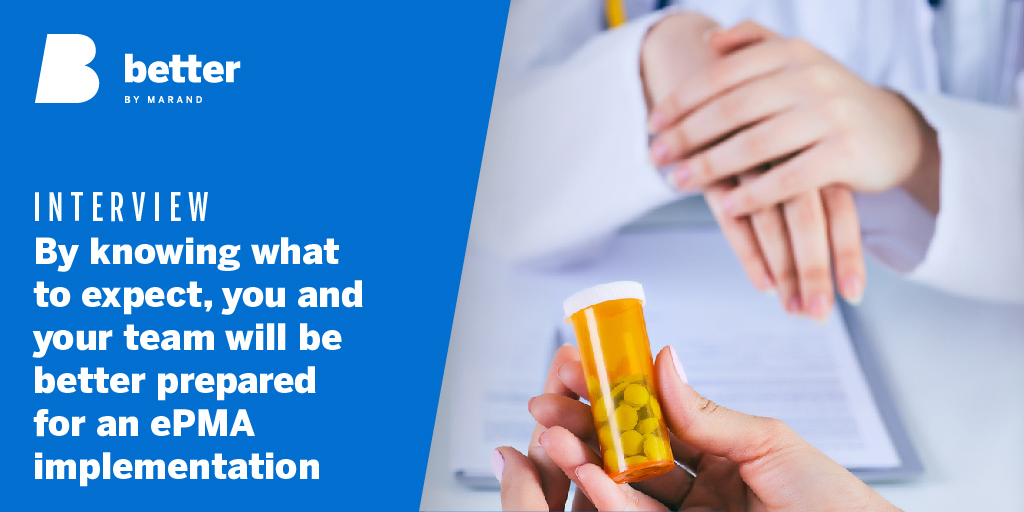ehealth
By knowing what to expect, you and your team will be better prepared for an ePMA implementation
We talked to Božidarka Radović, a biomedical engineer and Better Meds Product Manager, who shares the opinion that a gap analysis is the first and most necessary step for a hospital’s digital transformation journey.
Božidarka, what does gap analysis actually mean in the process of ePMA implementation? As you mentioned in your blog, a gap analysis is the first and most necessary step for a hospital’s digital transformation journey.
I still feel that way. The implementation of an ePMA system is a complex process that requires a well-thought-out plan. According to research mentioned on KLAS’s blog post Making Sense of EHR Satisfaction, as much as 60% of implementation consists of methodology and collaboration, with the rest being made up of the product component, at 22%, and configuration, at 18%.
To minimise medication errors across your care settings, you must first identify where, how, and why they occur. While it may be a tough task to tackle, it has a tremendous pay-off. A proper gap analysis will set a strong baseline for the successful digitisation of the medication management system in your hospital.
In one of the Better webinars, we talked to David Chalkley, deputy CCIO and Digital Clinical Safety Lead at Somerset NHS Foundation Trust, about how to build and motivate the team during an ePMA implementation. A question for you: who do you think should be in the gap analysis team in the hospital?
It is essential that while doing the gap analysis nurses, pharmacists, and doctors are included in the process, so that as a vendor we can be sure that our solution covers the great majority of their problems.
It is also crucial for them to understand that every user working with the ePMA solution has their own requests. Usually, their requests are all related in some way, but they can still differ to some extent. As a vendor, it is significant for us to see what that baseline is, and to understand the specific problem that we are solving.
By now the team should understand which scenarios (which used to be done on paper) they want to have in the electronic prescribing system. They need to identify any real problems they currently have with using paper, not just issues that can’t be solved with a paper-based process. For example, in a case where a paper-based solution hasn’t been found for a specific problem – after years of using paper – it will probably also take some time for electronic solutions to find the best possible solution.
What are the essential questions the gap analysis team should ask themselves? As an expert, what is your main advice to the ePMA implementation or gap analysis team?
My answer is short and simple – they should know that an ePMA solution is not here to copy the logic used in paper-based processes, or to solve problems connected to a lack of communication between the medical staff. Undoubtedly, the electronic system improves medication management processes in the hospital, ensures better patient safety, and facilitates the work of medical personnel. However, doctors will still be the decision-makers when it comes to the treatment process. The system is there to assist the personnel, not to replace them entirely; this will never happen.

|
Register for a recording of the webinar ‘How to motivate the team during an ePMA Implementation’ with David Chalkley, Deputy CCIO & Digital Clinical Safety Lead at Somerset NHS Foundation Trust and Anže Droljc, Business Development Director at Better by Marand. |
And, finally, how important is the role of the vendor in the gap analysis process?
Good question. The medical and implementation team and the vendor should understand which problems they are trying to solve, and they should support each other on their way to complete the implementation process. In the end, we should all work together to achieve one goal – to help patients and create a world where there are almost no medication errors which could affect patients’ health or lives.
The best thing for us as at Better is that we have people who were and still are working in a real hospital environment, and we understand the problems we are solving with our solutions. In fact, our Better Meds system was developed in cooperation with those who work in hospitals – doctors, nurses, and pharmacists, and this is something we have never lost sight of.
Read also:
- Effective digital transformation takes place first in people, then in technology
- In Taunton, they no longer wish to see the paper medical chart ever again
- Electronic prescribing saves lives, so make the first step with a gap analysis
- Medication discrepancies: up to 67% of patients coming to the hospital have them
- Seven things to think about before buying an ePMA

